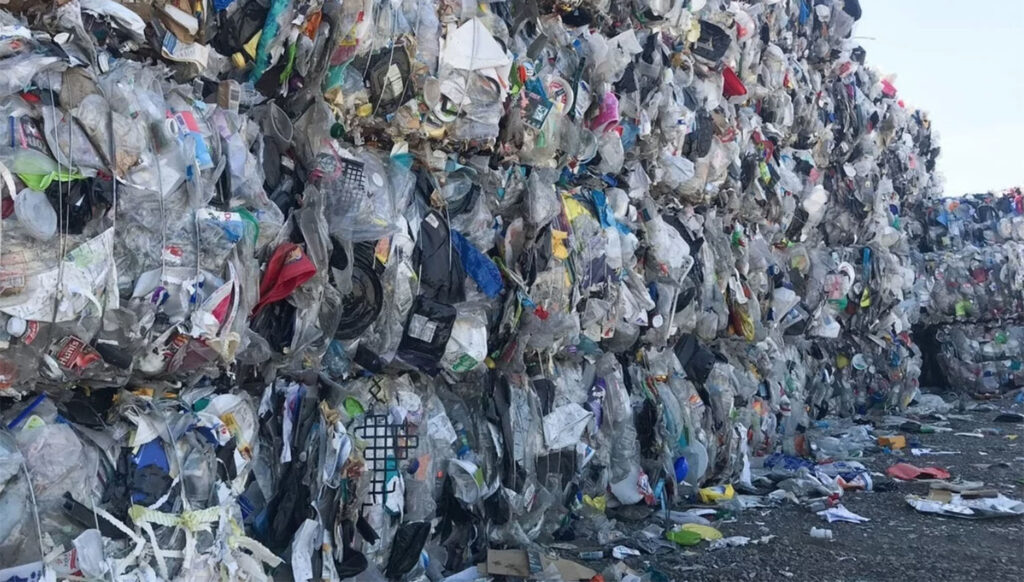By Amy Durr, Alliance Communications Coordinator
As we celebrate Global Recycling Day, I wonder if you’re like me and are still confused about what’s recyclable. I end up wishcycling in hopes the item will somehow be recycled. I hope this helps clarify things: “Everything you think you know about recycling is probably wrong,” says NBC News. “Our perception of recycling in the US and the realities of actual recycling do not match up…The EPA estimates that 75% of waste produced in the US is capable of being recycled, the US recycling rate has plateaued at about 34% — and that hasn’t changed since 2010.”
NBC News continues, “Before we get into the problems with recycling in the US it’s important to point out that, though we could be doing a much better job, even a little bit of inefficient recycling is better than no recycling at all. Americans are still returning about 68 million tons of raw materials…and that means, in the case of paper for example, fewer trees cut down, less carbon burned hauling logs to mills, less energy and water used to pulp those trees and an overall net gain for the environment. Recycling is good. Recycling works. And we need to keep recycling.”
It’s true that in some places in the US our processes are working very well — big cities like San Francisco on the West Coast claim to be recycling about 70% or more of their waste, NBC News says. In regions like Boulder, CO and St. Paul, MN for example, recycling companies are independent non-profits who operate with the mission of recycling as much as they can.
“Recycling isn’t a nebulous humanitarian environmental practice of collecting waste. It is, actually, a business,” as NBC News points out. The business of recycling “is a commodities market that we all participate in. It produces paper pulp and plastic pellets and glass shards and other materials that are used by manufacturers to make goods.” Eric Goldstein, a senior attorney at the National Resources Defense Council, says “Like wheat and oil and gold, recycled commodities like aluminum, paper, metals, and plastics have value and those fluctuate.”
Because recycling plants are local, “Not all recycling plants are actually capable of processing all materials.” This means you think you’ve recycled 100% of the recyclable goods you buy when, in fact, you probably haven’t.
A recent Department of Energy report on plastics lays out the problem with plastics clearly: “Of the estimated 44 metric tons of plastic waste managed in 2019 domestically, approximately 86% was landfilled, 9% was combusted, and 5% was recycled.” But this is also an opportunity: Landfilled plastics represented significant US economy losses in 2019, an average of $7.2 billion in market value or 12% of industrial energy consumption. The report clearly states that recycling could help keep that value and energy in the system, according to the Recycling Partnership.
Part of the recycling challenge is “single-stream recycling,” the system of dumping all recyclables into one bin. It’s popular and consumer-friendly, but the cost-benefit math of it has changed, according to FiveThirtyEight. The benefit — more participation — may have been overtaken by the cost — unrecyclable recyclables. Machines separate different types of materials from one another, and sometimes can’t tell the difference between a piece of paper and a flattened water bottle or tin can. One out of 6 bottles and 1 in 3 cans end up sorted and shipped out wrong.
What does this mean? You end up having consumers knowingly and unknowingly participating in what Ruth Abbe, president of Zero Waste USA, calls wishcycling. “We wish it was recyclable, so we recycle it anyway,” even if it’s just going to end up in a landfill. How can we move forward with such a huge, complex, messy system?
Environmentalists and lawmakers in some states are now pushing for legislation that bans single use plastics, and for “bottle bills” which pay customers to bring back their plastic bottles. The bills have led to successful recycling rates for plastic bottles in places like Oregon and Michigan, but have faced steep resistance from plastic and oil industry lobbyists, according to NPR. “The real solution is to switch to systems of reuse and refill,” Ramsden said. “We are at a decision point on plastic pollution. It is time for corporations to turn off the plastic tap.“
The Recycling Partnership outlines 5 steps that would make a meaningful difference in the US:
- First, the size of the solution has to match the size of the problem. But if we really want a better system, we need to invest $17B so that everyone can recycle, everyone does recycle, and there’s a better infrastructure. How long would it take to fix it? 5 years. And the return on that investment? A $30B return over 10 years.
- Make sure that everyone can recycle. Currently 40 million households don’t have the option to recycle.
- Engage the public about recycling a range of materials. Let’s be clear: this isn’t just a plastics problem. Every single material needs a recycling boost and every material type can play its role in greenhouse gas reduction. Based on our studies, here’s a rundown of residential recyclables: 3 out of 5 cardboard boxes, 7 of 10 glass bottles and jars, half of aluminum and steel cans, two-thirds of all mixed paper, and two-thirds of all HDPE containers like milk and detergent jugs end up in the dump.
- Companies have to make products and packaging that are designed for the recycling system or they won’t get recycled.
- We need to pass good policy holding companies responsible and assuring a value chain for progress. Rather than putting recycling on the backs of stressed local governments, a different model is needed to tie recycling to consumption. This will bring the financing needed for the next leap forward and the incentives to reduce problematic packaging.

